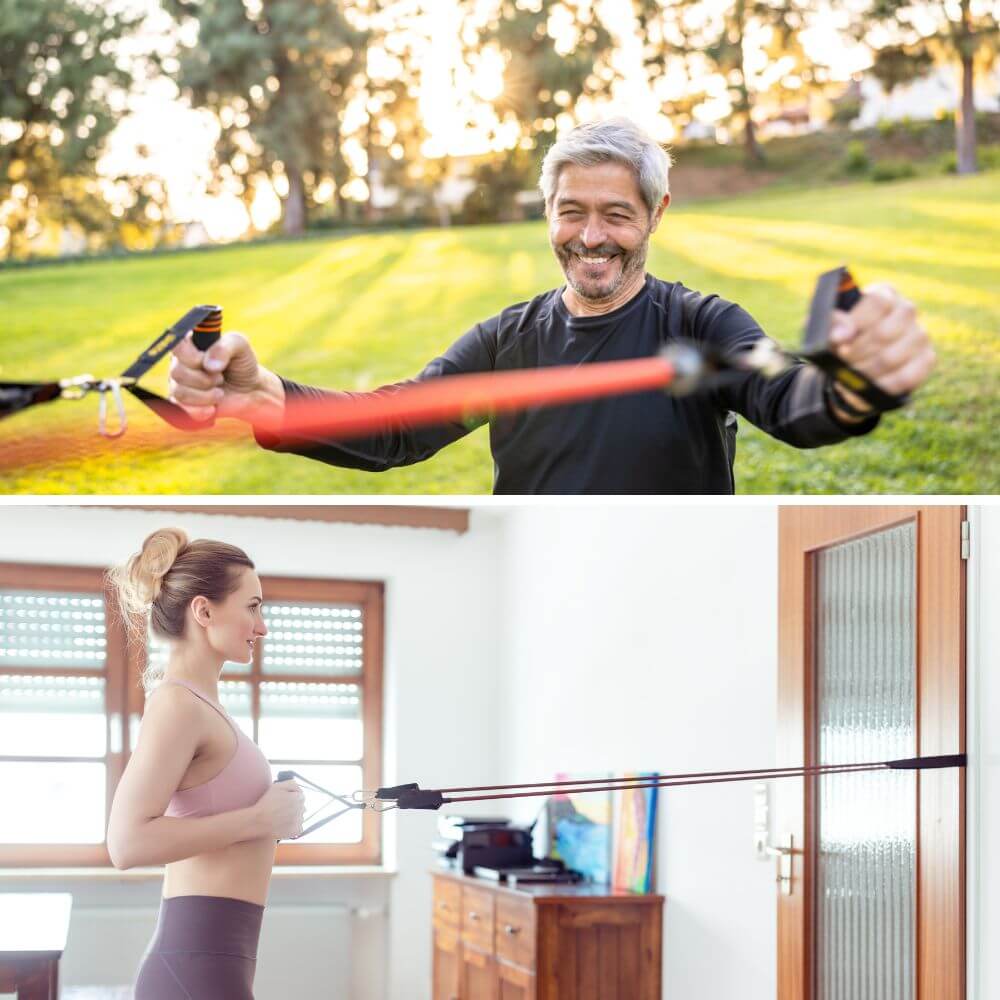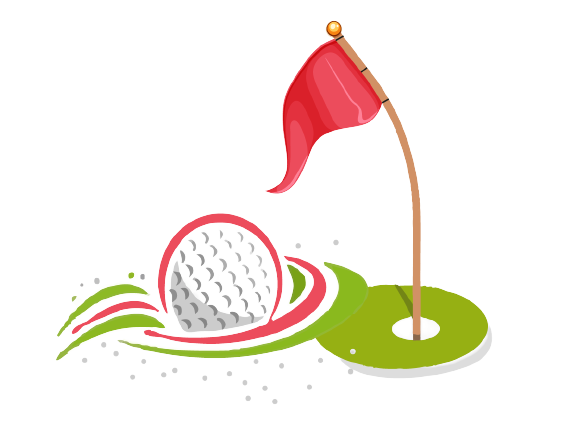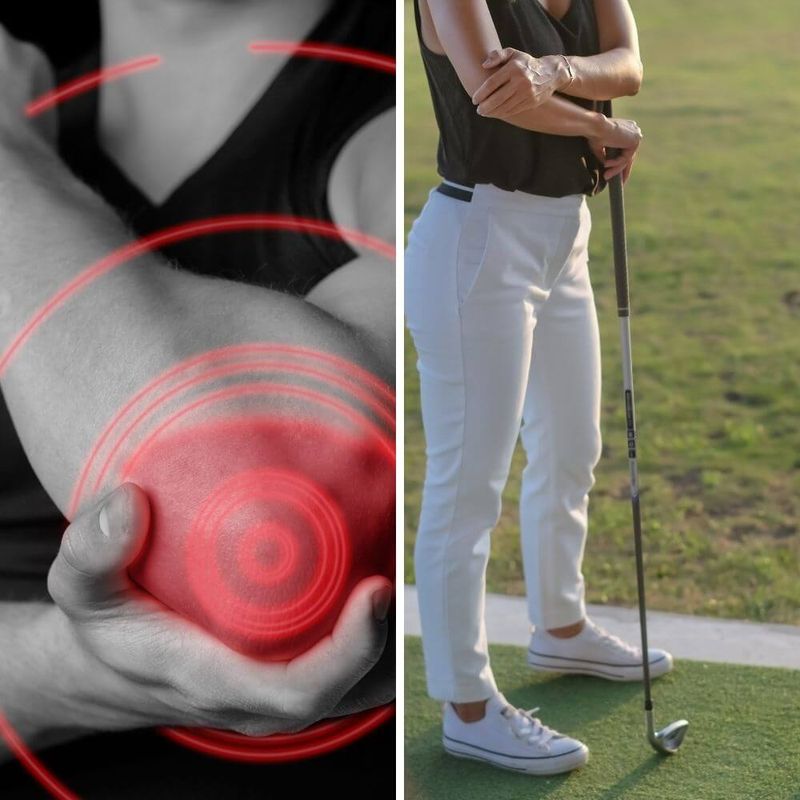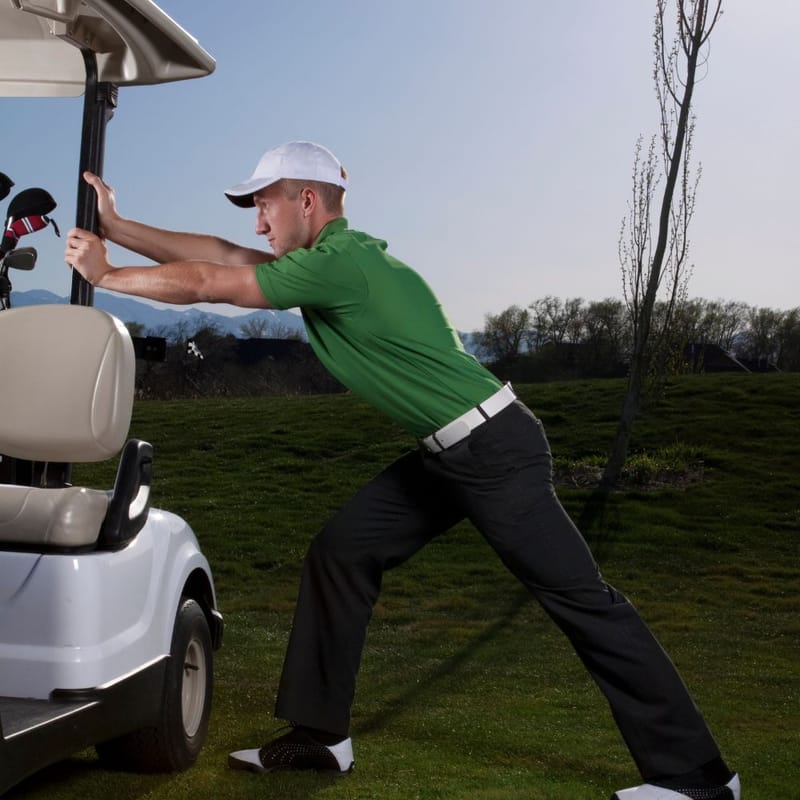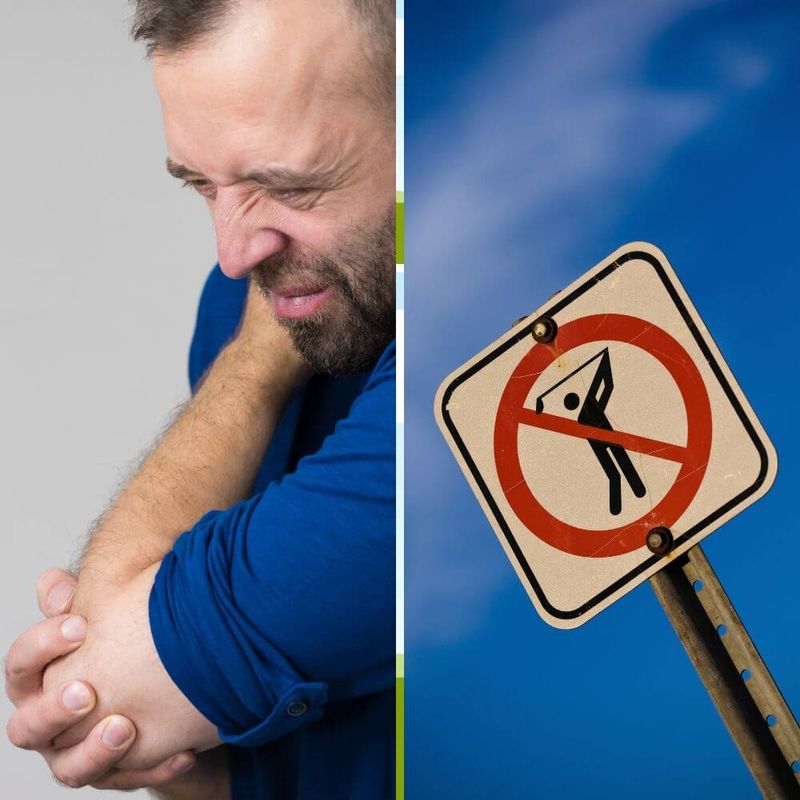Content Summary
If you have or have ever had golfers elbow then you know how painful it can be to play golf with this type of injury. If not properly taken care of it can cause you to quit the game you love so dearly.

You can reduce golfers elbow pain with the following simple yet effective resistance band strengthening exercises.
"Golfer's Elbow" also known as "Tennis Elbow" is a common sports injury that can cause significant elbow pain and discomfort, impacting one's physical health and wellness. This leads to poor golf swing habits and ultimately poor play out on the golf course.
However, a well-planned exercise routine incorporating specific golf elbow stretches can aid in rehabilitation and pain management. These exercises, designed to enhance musculoskeletal health, include the wrist extensor stretch, forearm extensor stretch, wrist flexor stretch, and wrist curls.
If you suffer from golfer's elbow pain, resistance band exercises are a great way to strengthen your elbow, forearm muscles and tendons. These exercises are easy to do at home and provide an effective way to rehabilitate elbow injuries.
In this article, we will cover the benefits of resistance band exercises for golfers elbow and provide step-by-step instructions for 9 exercises that can help relieve elbow pain and improve strength.
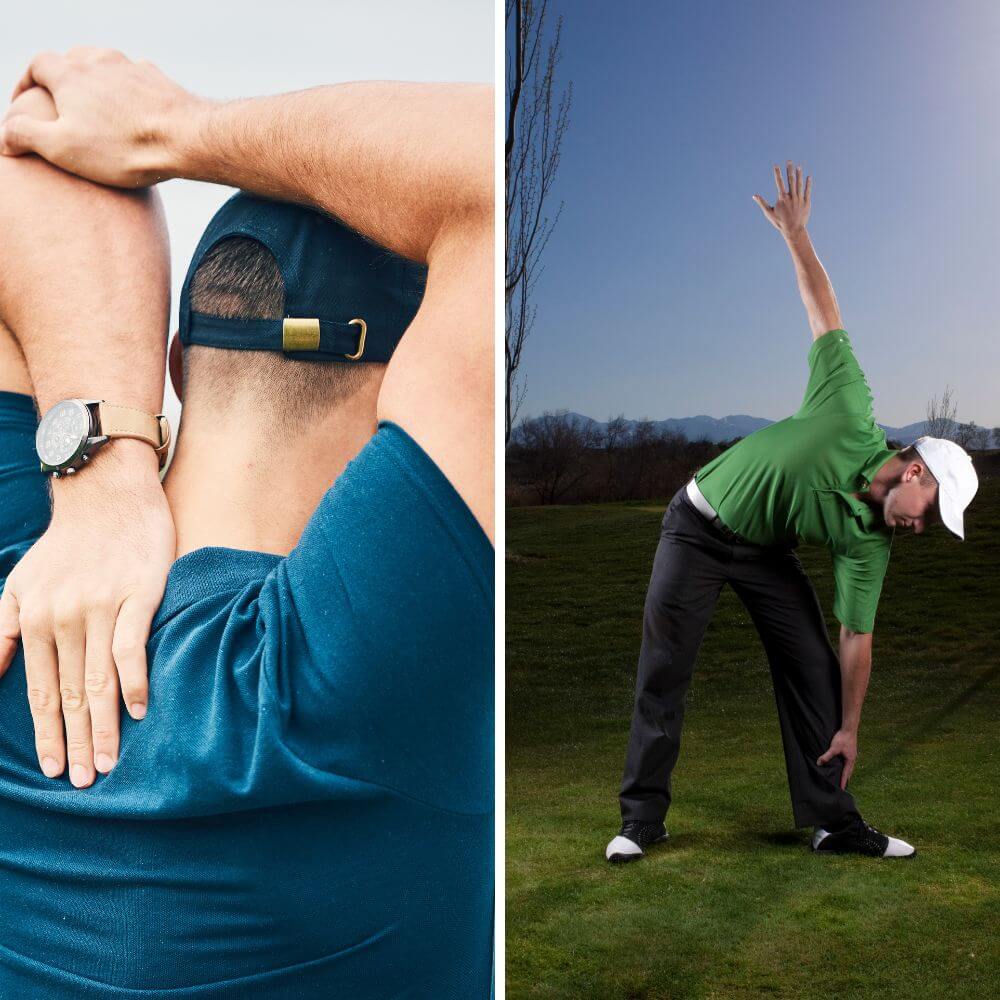
All products featured on GolfOften.com are researched and selected by our editors. However, when you buy something through us, we may receive a small commission at no additional cost to you.
1. Wrist Curls
Wrist curls target the wrist flexor muscles on the front of your forearm. Strengthening these muscles can help relieve medial epicondylitis (golfer's elbow).
How to:
- Sit in a chair with your forearm resting on your thigh, palm facing up.
- Wrap the center of a resistance band around the palm of your hand and hold the ends in your fist.
- Keeping your forearm still, bend your wrist slowly upward toward your body.
- Slowly lower back to the starting position.
- Complete 10-15 reps, take a short break, and repeat for 2-3 sets.
2. Reverse Wrist Curls
Reverse wrist curls work the wrist extensor muscles on the back of your forearm to help lateral epicondylitis (tennis elbow).
How to:
- Sit in a chair with your forearm resting on your thigh, palm facing down.
- Wrap the resistance band around the back of your palm and grip the ends in your fist.
- Keeping your forearm still, bend your wrist slowly downward.
- Slowly return to the starting position.
- Do 10-15 reps, rest, and repeat for 2-3 sets.
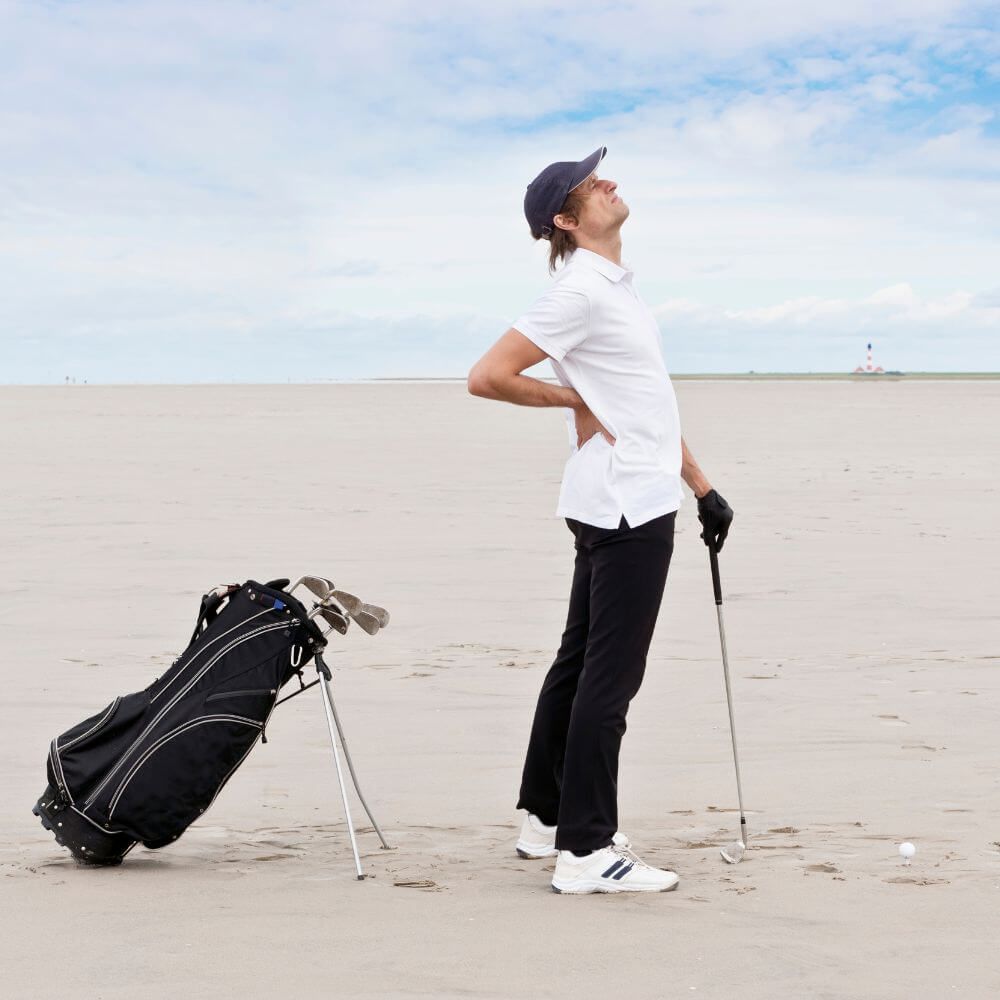
3. Diagonal Wrist Flexion
This exercise strengthens your wrist flexors eccentrically to improve flexibility and relieve medial elbow pain.
How to:
- Hold one end of the band in each hand with your elbows bent 90 degrees by your sides.
- Extend your left arm down and across your body. This anchors the band.
- Bend your right wrist upward while slightly twisting your palm (diagonally). Slowly return to start.
- Do 10-15 reps and switch sides. Complete 2-3 sets per side.
4. Diagonal Wrist Extension
Diagonal wrist extension targets the extensor muscles that are affected in lateral epicondylitis (tennis elbow).
How to:
- Hold one end of the band in each hand with your elbows bent 90 degrees by your sides.
- Extend your right arm downward across your body to anchor the band.
- Bend your left wrist downward diagonally while slightly twisting the palm. Slowly return to start.
- Complete 10-15 reps then switch sides. Do 2-3 sets per side.
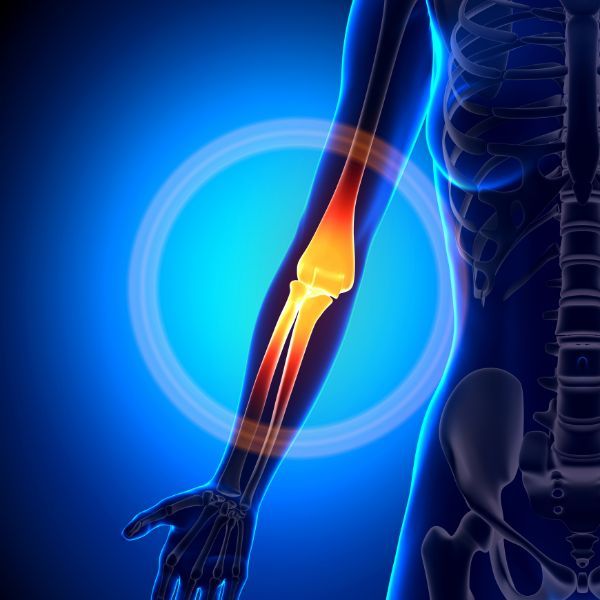
5. Supination
This exercise strengthens your biceps and supinator muscles, which help rotate and flex your forearm.
How to:
- Anchor the middle of the band under your foot while holding one end in each hand.
- With your elbow bent 90 degrees and fixed at your side, rotate your palm upward.
- Slowly return to the start position.
- Do 10-15 reps. Repeat for 2-3 sets.
6. Pronation
Pronation targets the pronator teres muscle on the front of your forearm. Strengthening this can aid in elbow stability.
How to:
- Anchor the band under your foot and hold an end in each hand.
- With your elbow bent 90 degrees, rotate your palm downward.
- Return to the starting position.
- Complete 10-15 reps. Perform 2-3 sets.
7. Flexion
Flexion strengthens your biceps to bend and flex your elbow. This can help improve arm strength and mobility.
How to:
- Anchor the band under your foot while holding one end in each hand.
- With your elbow straight, bend your elbow upward toward your shoulder.
- Slowly lower your arm back down.
- Do 10-15 reps. Complete 2-3 sets.
8. Extension
Extension targets your triceps on the back of your upper arm to straighten your elbow.
How to:
- Anchor the band under your foot and hold an end in each hand.
- With your elbow bent 90 degrees fixed at your side, straighten your elbow.
- Slowly return to the starting position.
- Complete 10-15 reps. Perform 2-3 sets.
9. Isometric Flexion
Isometric exercises help strengthen your muscles while reducing elbow strain.
How to:
- Stand upright and loop the band behind your back holding an end in each hand.
- Bend both elbows to 90 degrees as if you were doing a bicep curl.
- Press your elbows outward into the band to create tension for 5 seconds.
- Relax and repeat for 10 reps. Complete 2-3 sets.
Benefits of Resistance Band Elbow Exercises
Resistance band exercises offer many benefits for strengthening your elbows and forearms:
- Improve strength in the muscles that bend and straighten your elbow. This includes your biceps, triceps, wrist flexors and extensors.
- Strengthen tendons that are commonly affected by overuse injuries like tennis elbow (lateral epicondylitis) and golfer's elbow (medial epicondylitis).
- Increase range of motion in your elbow and wrist joints.
- Enhance stability around your elbow joint.
- Reduce pain associated with elbow tendonitis and arthritis.
- Convenient and easy to do at home as part of an elbow rehab program prescribed by your physical therapist or doctor.
- Provide light resistance that is adjustable by using bands of varying resistance levels.
- Allow movement in multiple planes to approximate natural wrist and elbow motions.
The Causes of Golfer's Elbow Pain
Elbow and golfer's elbow pain is commonly caused by tendonitis or inflammation of the tendons that attach your forearm muscles to the bone on either the inside or outside of your elbow joint.
Repetitive wrist and elbow movements from sports like golf and tennis or jobs that require extensive use of your hands can overwork the forearm tendons and cause small tears in the tendon fibers. This leads to pain, tenderness, and impaired function.
Other causes include muscle strain, arthritis, and injuries that damage the ligaments, muscles or bones around the elbow joint. Elbow pain can also sometimes radiate from the neck or shoulder region.
When Should You See a Doctor for Elbow Pain?
See your doctor promptly if you have any of the following:
- Persistent or worsening elbow pain
- Swelling, warmth or redness around your elbow
- Numbness, tingling or weakness in your elbow, forearm or hand
- Elbow pain that impacts your daily activities
- Elbow pain that doesn't improve with rest and home treatment
A doctor can perform tests to determine the underlying cause of your elbow pain and rule out serious medical conditions. Based on the diagnosis, they may prescribe specific elbow exercises, medications or other treatments to help relieve pain and improve function. Don't try to self-diagnose and treat elbow pain at home.
Summary of Key Takeaways
- Resistance band elbow exercises can strengthen your elbow and forearm muscles and tendons to improve function and reduce pain.
- Be sure to start with light resistance and low reps to avoid overstressing your elbows when beginning a program. Gradually increase intensity over time.
- See your doctor for an accurate diagnosis if you have persistent, worsening or severe elbow pain before starting an exercise routine.
- Warm up your elbows properly and use good form during the exercises. Stop if you have increased pain.
- When performed correctly as part of a balanced exercise program, resistance band elbow exercises can aid recovery from elbow injuries.
- Talk to your physical therapist or doctor to learn if these exercises may be appropriate for your specific condition.
While resistance band elbow exercises can be beneficial, they are not a substitute for professional medical advice, diagnosis and treatment. Always seek the advice of your doctor regarding any questions or concerns you may have regarding your elbow pain and recommended exercises.
Frequently Asked Questions - Resistance Band Exercises for Golfer's Elbow
What is golfer's elbow?
Golfer's elbow, also known as medial epicondylitis, is a condition characterized by pain and inflammation in the tendons that connect the forearm muscles to the inner side of the elbow.
How can resistance band exercises help with golfer's elbow?
Resistance band exercises can help strengthen the muscles and tendons around the elbow and forearm, providing support and reducing strain on the injured area.
What are the best resistance band exercises for golfer's elbow?
Some of the best exercises include wrist curls, forearm pronation and supination, elbow extensions, and triceps extensions. These exercises target the muscles and tendons involved in golfers' elbow and help in their rehabilitation.
How should I perform resistance band exercises for golfer's elbow?
To perform resistance band exercises for golfer's elbow, follow these steps:
- Start in a seated position with your arm extended in front of you.
- Secure the resistance band around your hand and hold the other end firmly.
- Begin with simple wrist curls by bending your wrist up and down.
- Next, move on to forearm pronation and supination by rotating your forearm.
- Perform elbow extensions by straightening your arm against the resistance of the band.
- Finish with triceps extensions by bending and straightening your elbow.
- Repeat each exercise for 10-15 repetitions, gradually increasing the resistance as you get stronger.
Can resistance band exercises help with pain relief in golfer's elbow?
Yes, resistance band exercises can help with pain relief in golfer's elbow by strengthening the muscles and tendons, reducing strain on the injured area, and promoting proper alignment and function.
Should I consult a healthcare professional before starting resistance band exercises for golfer's elbow?
It is always recommended to consult a healthcare professional, such as a physical therapist or sports medicine specialist, before starting any exercise program for golfer's elbow. They can provide a proper diagnosis, create a personalized treatment plan, and guide you through the exercises to ensure safety and effectiveness.
Are there any exercises I should avoid with golfer's elbow?
Golfer's elbow, or medial epicondylitis, is a condition that can be worsened by certain activities that involve repetitive bending and straightening of the elbow, especially with a tight grip or twisting motion. If you have golfer's elbow, it's important to avoid exercises that may exacerbate your symptoms, at least until the inflammation subsides and healing is underway.
Here are some exercises and activities to avoid or modify if you have golfer's elbow:
Weight Lifting: Be careful with exercises that involve significant gripping or twisting of the forearm, such as bicep curls, pull-ups, push-ups, or tricep extensions. Opt for lighter weights and higher repetitions to prevent aggravation.
Golfing and Tennis: These sports put a lot of strain on the inner part of the elbow. If you're an avid golfer or tennis player, consider taking a break or seeking advice on changing your swing or grip to reduce stress on your elbow.
Throwing Sports: Any sport or exercise that involves throwing, such as baseball or cricket, can exacerbate golfer's elbow.
Certain Yoga Poses: Poses that put pressure on your elbows like crow pose or low plank can potentially aggravate your condition.
Heavy gripping activities: This could include rowing, climbing or using certain equipment at the gym like heavy dumbbells, barbells or kettlebells.
Manual Labor: Activities like hammering, chopping wood, gardening, or using a screwdriver can cause or worsen symptoms.
Thank you for visiting, and we hope to see you back soon!
